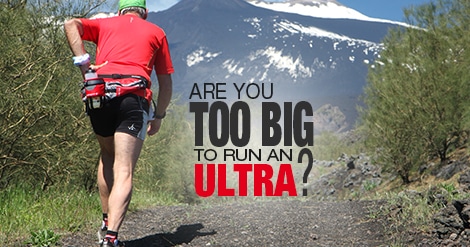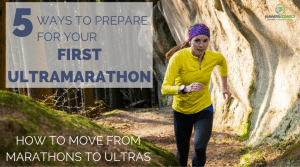When you go to an ultramarathon event for the first time, you might find ultra runners a bit intimidating. You may even consider if you want to still compete in the event. Do I really belong here?
Ultra runners are rail-thin, outfitted with gels, sports drinks, and other supplies, and look like they’re built to run for miles without so much as breaking a sweat. Some have beards that would make Grizzly Adams jealous.
Of course, ultra runners are also known for being as nice as they come, but you can still see why a newcomer might wonder whether their body was built for an ultramarathon.
We are going to show you what we found about size and running faster in the ultra distance races, and then give you the training advice you need to get started with your ultra marathon plan.

Factors affecting ultramarathon success
With the increasing popularity of races beyond 26.2 miles, there are a lot of opportunities for researchers to investigate which types of people perform best over very long races. We already looked at how age affects your ultra marathon ability. Now it is time to look into another variable; size.
Do slightly-built, lightweight runners have a distinct advantage in the ultramarathon?
A slew of studies published by researchers in Switzerland, led by Beat Knechtle at the University of Zurich, suggests they might.
In a 2013 study, seventeen participants in a five-day, multi-stage ultramarathon were weighed, measured, and examined before the race.1 Then, once the researchers recorded the finish times of the runners, they used statistical analysis to determine whether variables like height, weight, and body fat percentage would be predictive of race performance.
Now:
Most measurements, including (perhaps surprisingly) height and body fat percentage, showed no correlation with finish time. However, higher body mass and having a larger upper arm circumference were both associated with slower finish times.
[bctt tweet=”Interesting read! @Runners_Connect found no correlation between height or body fat percentage and ultra marathon success!” via=”no”]
It makes sense too:
More weight to carry around will slow you down, especially in your upper body, where strong, powerful muscles don’t “carry their own weight” like strong legs do.
Notably, calf or thigh circumference were not associated with slower race times.
The findings concerning upper-arm circumference were in agreement with an earlier study by several of the same researchers. In that study, the researchers used a similar protocol, measuring nineteen male finishers of a 750-mile, 17-day race across Germany.2
This time, only upper arm circumference predicted finish time, not body mass. Other factors, like body fat percentage and height, were also not associated with finish time.
How does this compare to research focused on more (pardon the oxymoron) reasonable ultramarathon races?
One study examining competitors in a 24-hour race found no association between body size measurements, but did find that personal best at the marathon was associated with a better finish in the race, with faster marathoners covering more ground over the day-long competition.3
A 2010 study examined 169 runners competing in a 62 mile race again found higher body mass, higher percent body fat, and larger upper arm circumference associated with slower race times.4
Reliable explanation for variability?
Fortunately for larger runners with an inclination to try an ultramarathon, these factors, though statistically significant, only explain 20-40% of the variability in race times. The same 2010 study found that training volume and training speed were much stronger predictors of finish time, with more training and a faster training pace being associated with faster finish times.
Likewise, another study of 62-mile ultramarathon participants found that training volume and marathon personal record were the best predictors of ultra performance, far stronger than body size.5
[bctt tweet=”Marathon PRs and training volume are better predictors of ultra marathon success than body size”]
How much of an advantage does it give?
The science shows that there is probably a small advantage to being lighter and skinnier, especially in your upper body. Notably, being tall doesn’t seem to be a disadvantage at all. We already found that bigger runners do not have any higher of an injury risk.
Big biceps, however, don’t do much to help propel you up a rutted trail when you’re doing a fifty-miler.
Whats the bottom line?
It’s not worth fretting about whether or not you are “built” for the ultramarathon—you have a lot more control over how you train and how you prepare, and since these have a bigger impact on your finish time in a super-long race, it’s a much better use of your time to focus on increasing your training volume, doing some faster running, and even dropping down to the marathon to improve your PR if you want to run well in an ultramarathon.
How to train for an Ultra
To help you with this, here is a quick review (and a link to a more in-depth guide) on optimal training for the Ultra. Follow these steps to get started:
- Build a solid foundation
- Spend 3-6 months doing a mixed program of strength training, hiking, cross training, and cycling, in addition to your running. Follow this link for an in-depth how-to.
- Make injury prevention a priority
- Strengthen your glutes and core, as well as any other areas that you have found weakness in
- Be prepared for accumulated fatigue
- Back to back long runs of 3 hours on Saturday followed by 3-4 hours on Sunday will get your legs used to running tired
- Run at “forever pace”
- Consider using a heart rate monitor to bring the pace down if you struggle to keep it easy enough, but you should be running at a pace you could “run all day” at
- Use the split run method
- Break a 25 mile run up into a 15 mile run in the morning and a 10 mile run in the evening
- Continue to cross train, especially long bike rides over hilly terrain
- This gives your body multiple hours of low impact exercise, while building endurance. Here are some awesome, heart-pounding cross training workouts for you to try.
- Stay in the here and now
- Accept that there will be many ups and downs in the race, but you can only focus on the mile you are in, and keep going even throughout those moments your mind is finding reasons for you to stop
For further tips, check out our post on How to Train for an Ultra.
[bctt tweet=”I feel much better about the ultra marathon after reading this post from @Runners_Connect about body size and ultramarathons” via=”no”]







